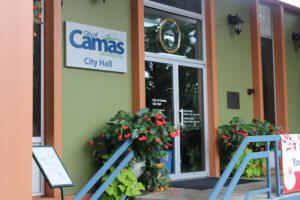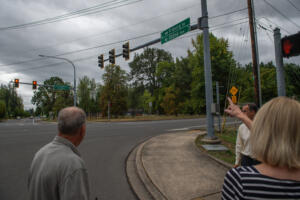When it comes to improving safety and easing traffic jams at the Northwest Lake Road and Northwest Sierra Street intersection in Camas, the majority of community members, stakeholders and Camas officials who have weighed in on the project say they prefer a roundabout over a traffic signal.
The intersection has not yet been the site of a major traffic crash, but some Camas officials warned this week that it’s just a matter of time.
“Most of us know we’re headed for a crash here,” Camas City Councilman John Nohr said Monday, during the Council’s workshop, of the three-way intersection at Northwest Lake Road and Northwest Sierra Street near Camas’ Lake Heights and Lake Pointe neighborhoods. “I’m surprised it hasn’t happened yet.”
The intersection has been on City leaders’ radar since 2019, when public comment and testimony about the intersection’s wait times and safety concerns prompted Camas City Council members to approve its addition to the Six Year Transportation Improvement Program. In June, the project moved to the program’s No. 3 priority spot.
“The intersection currently does not meet the City’s level of service standards,” Camas Engineering Manager James Carothers told Council members Monday.




